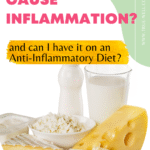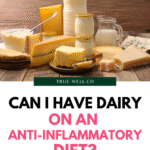If you’ve been trying to eat anti-inflammatory, you’ve probably come across a dozen different food lists — and they all seem to say something different about dairy.
Some say it’s a total no-go. Others say yogurt is practically medicine. So, does dairy actually cause inflammation… or not?
I get why you’re confused. For years, the dairy industry has told us milk builds strong bones and yogurt keeps our gut healthy. And truthfully, milk is rich in calcium and vitamin D, and yogurt’s probiotics can help your digestion.
But here’s the problem: the science isn’t black and white. Some studies say dairy reduces inflammation, others say it can make things worse. So how do you know what’s true for your body?
⚡ Stop Guessing Which Foods Fuel Your Inflammation
Dairy might be one of your triggers… but it’s not the only sneaky culprit.
My Anti-Inflammatory Quick Start Guide shows you:
- The 10 foods to swap first to start feeling better fast
- A printable shopping list for easy swaps (no full pantry clean-out required!)
- My 4-step method to start your anti-inflammatory journey today
Discover My Unique 4-Pronged Approach to the Anti-Inflammatory Diet So You Can Get Started Immediately (Without Getting Overwhelmed or Cleaning Out Your Entire Pantry)

- Why a full-scale pantry clean out is NOT the best way to start your anti-inflammatory journey, and the steps you can take instead to make sure you’re fueling your body with foods that love you back
- The essential foods you MUST add into your diet if you want to nourish and heal your body naturally
- My anti-inflammatory shopping list so you can quickly fill your cart with the right foods (no googling in the produce aisle or wasting hours staring at ingredient lists)

Step 1: Know What Inflammation Actually Is
Your immune system fires up inflammation whenever it senses a threat — like an infection, injury, or even certain foods your body sees as “trouble.”
- Acute inflammation is short-term and visible (like redness or swelling from a cut).
- Chronic inflammation is the sneaky one. You can’t always see it, but it quietly contributes to joint pain, fatigue, digestive issues, and even conditions like autoimmune disease, diabetes, and heart disease.
If you’re trying to lower inflammation with food, dairy is one of those “maybe” categories. For some people, it’s perfectly fine. For others, it quietly keeps the fire burning.
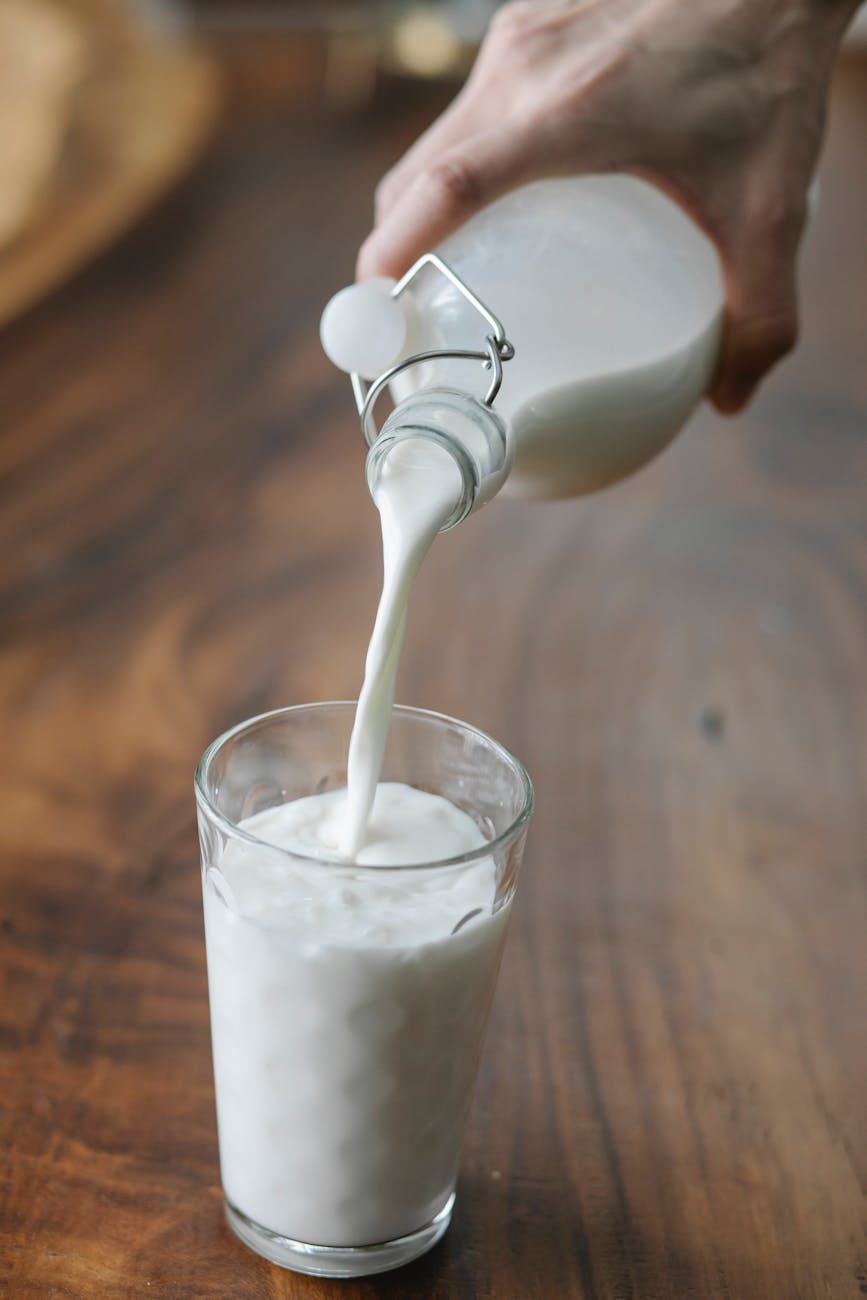
Step 2: Understand the Dairy + Inflammation Link
Here’s what makes dairy controversial:
Interestingly, different cows produce different types of casein (A1 vs. A2). A2 milk may be less inflammatory for some people. Also, many studies have also shown decreases in inflammation with dairy intake as well.
A very recent systematic review of these studies says these beliefs are simply not true. That the literature reviewed indicates that dairy has either a neutral effect or beneficial.
1: Sugar (lactose) and blood sugar spikes
Lactose is milk sugar, and sugar can fuel inflammation — especially if it spikes your blood sugar.
Lower-quality, feedlot cow’s milk is higher in pro-inflammatory compounds.
Grass-fed or raw dairy tends to have a healthier omega-3 to omega-6 balance.
3: Proteins: Casein and Whey
These are the main proteins in milk. Some people react to them, triggering bloating, acne, or even joint pain.
Benefits + Considerations for Dairy
We can absolutely get calcium and Vitamin D from other sources than dairy. For example, an 8 oz glass of milk has 300 mg of calcium in it.
You can get the same amount in a glass of soy milk, 3/4 cup of almonds, 1 1/2 cups dried figs, 2 cups of cooked kale, 2 cups of bok choy, or 6 oz of tofu.
There are also many other options for a slightly smaller amount of calcium, but when they’re added up, you can obviously go without dairy to get your RDA of calcium.
As far as Vitamin D sources, from late March to September, you can get your daily dose by spending about 10 minutes a day outdoors. Year-round good sources of Vitamin D include:
- Oily fish
- Egg yolks
- Red meat (that is organic and grass-fed)
- Anti-inflammatory foods that are fortified
- A Vitamin D3 supplement
A Vitamin D supplement (if you choose not to consume dairy) may be a really good decision since it’s estimated between 59% to 77% of the population is Vitamin D deficient.
So, no, we don’t need dairy, but it has become a staple ingredient across the globe. The surge in dairy-free diets, however, has prompted food companies to step up and start producing many other dairy substitutes that rival taste and texture of traditional dairy products.
💡TRUE-WELL Tip: Our Raw Milk Experiment
When my daughter had stubborn eczema patches, we decided to try raw milk after reading about its potential benefits for some dairy-sensitive people.
The results? Her skin cleared up, and she swore it was the best milk she’d ever tasted. Honestly, she’d get mad if I didn’t grab it for the week!
Raw dairy isn’t for everyone (and safety can depend on sourcing), but in our experience, quality makes a huge difference. Grass-fed, organic, or raw dairy often sits much better than the ultra-processed fat-free cartons from the grocery store.
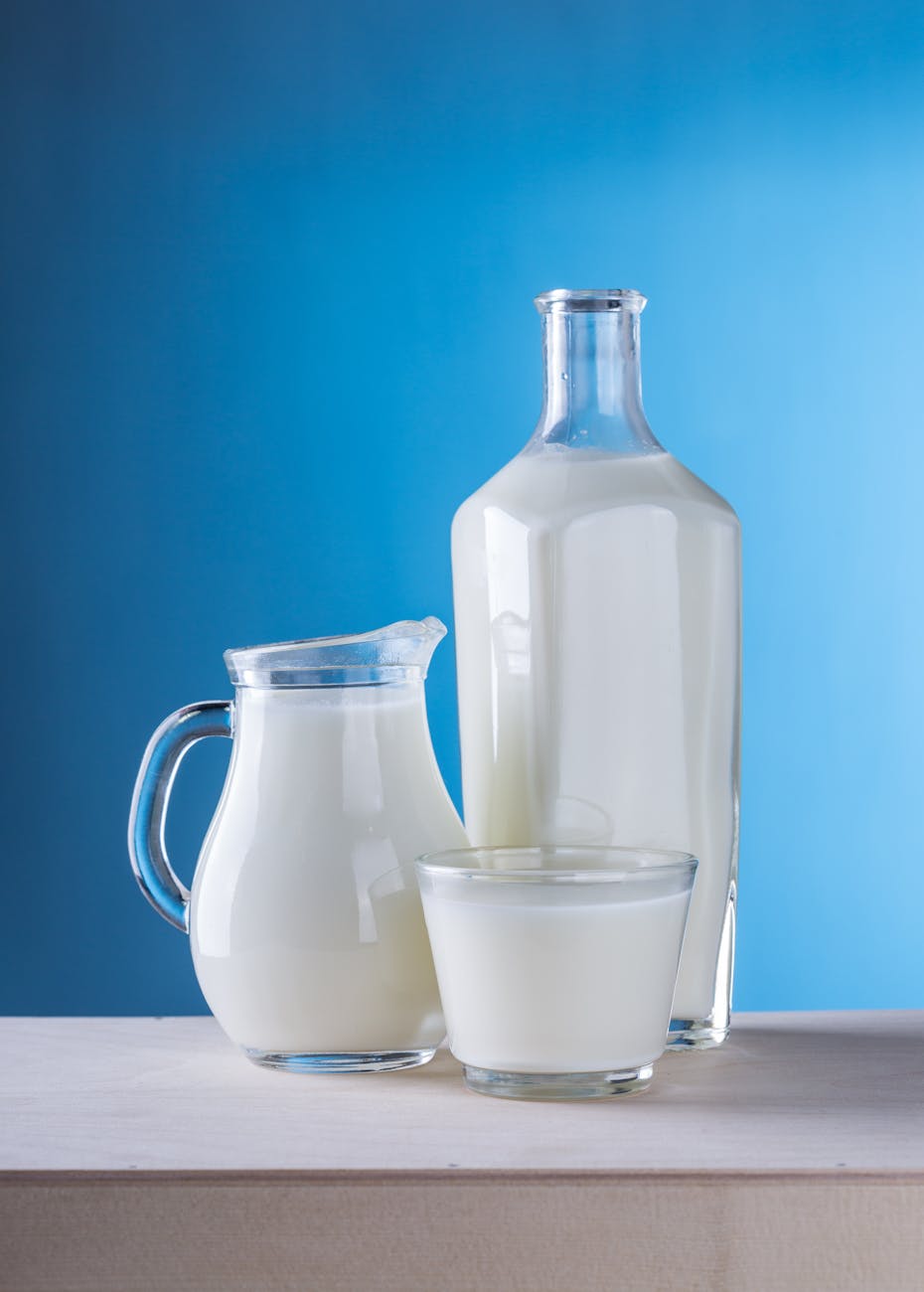
Step 3: Spot Dairy Inflammation Symptoms
Want to know if dairy could be causing issues for you? Watch for these signs:
- Bloating, gas, or bathroom changes
- Acne or skin rashes (like eczema or psoriasis)
- Morning joint stiffness or flare-ups
- Fatigue or brain fog after meals
✅ Micro-Action: Track your dairy intake and these symptoms for the next 3 days. If you notice a pattern, consider removing dairy for 2 weeks to see if things improve.
Step 4: Choose Dairy Wisely (If You Keep It)
If you tolerate dairy, quality and type matter most:
Best Options:
- Plain, organic yogurt (probiotics help calm the gut)
- Kefir or other fermented dairy
- Cottage or ricotta cheese (ideally grass-fed)
- Goat cheese or feta (often easier to digest)
Better Quality:
💎Grass-fed, organic, or raw dairy = less inflammatory compounds
Skip or Limit:
- Processed cheeses and sugary flavored yogurts
- Fat-free milk (heavily processed and missing natural enzymes)

Step 5: Decide if Dairy Belongs in YOUR Diet
Here’s your quick self-check:
- ✅ Lactose intolerant? Exclude it.
- ✅ Have a diagnosed milk allergy? Exclude it.
- ✅ Have celiac, eczema, or autoimmune flares? Test an elimination.
- ✅ IBS or IBD symptoms after dairy? Test an elimination.
If you said “yes” to any of the above, start with a short elimination test instead of guessing.
Your Next Step: Stop Guessing, Start Testing
Dairy is just one piece of the anti-inflammatory puzzle. Other foods could be silently fueling your joint pain, fatigue, or flare-ups.
Instead of piecing together random internet lists, grab my Anti-Inflammatory Quick Start Guide. Inside, you’ll get:
- ✅ The 10 foods to swap first to calm inflammation fast
- ✅ My 4-step method for building a diet that actually works for YOUR body
- ✅ A printable shopping list to make it simple (no full pantry clean-out required!)
👉 Download your Quick Start Guide now and finally see how much better you can feel in just a week.
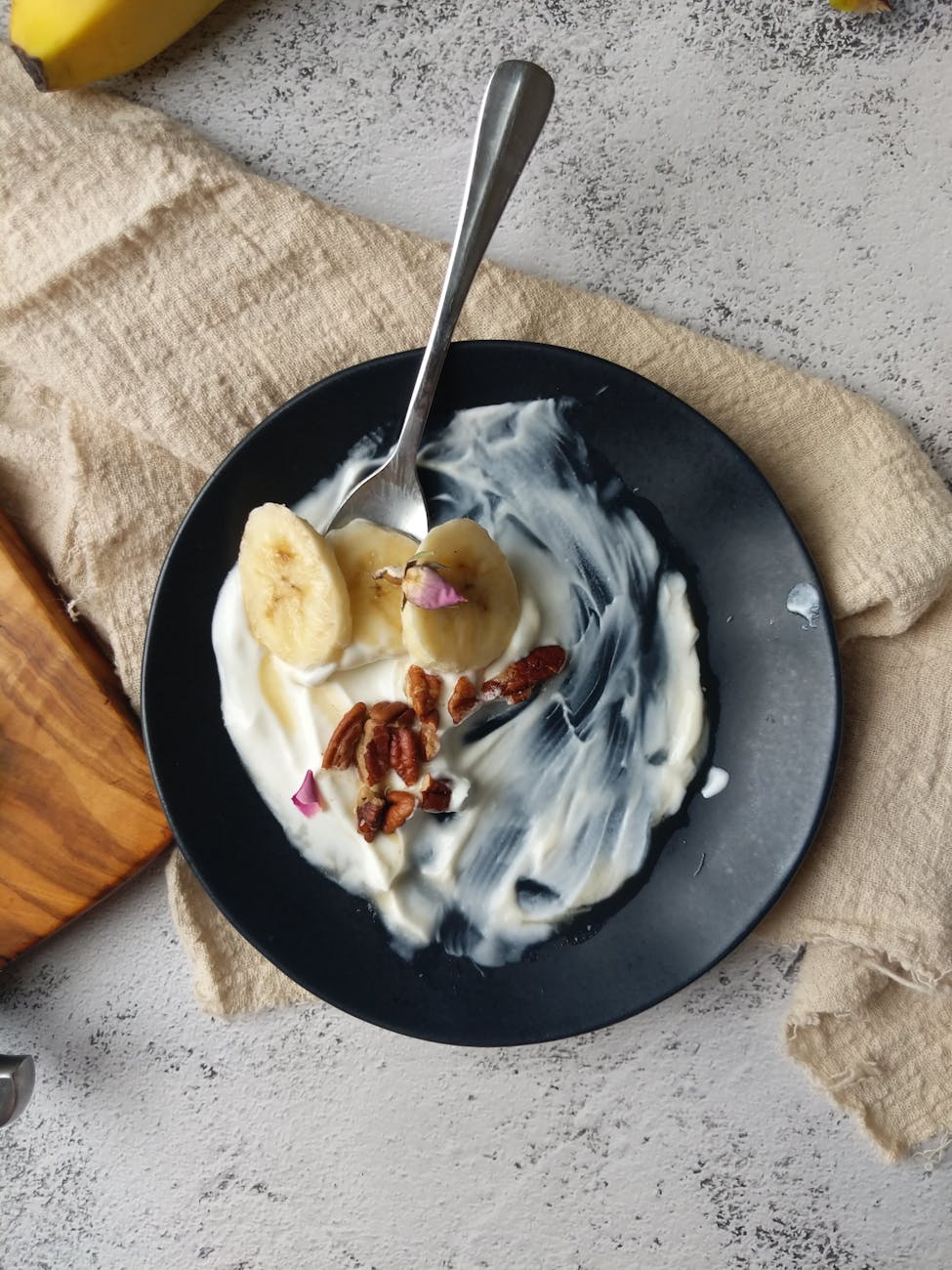
What dairy foods can I have on the Anti-Inflammatory Diet?
Here are your best options for dairy intake:
Yogurt
Yogurt can be a good choice for dairy as long as it’s purchased in plain, unflavored form, and also organic. Yogurt is thought to reduce inflammation by enhancing the impartiality of the intestinal lining via probiotics and also has nearly all the lactose (sugar) removed naturally via the fermentation process.
Probiotics provide several health advantages, including improved immune function and a robust and less porous intestinal gut lining. Consequently, it would reduce the odds of inflammation owing to the entrance of toxins and chemicals into the body through the stomach lining.
Fermented dairy products like yogurt and kefir are the primary sources of probiotics. Studies reported that consuming them frequently may prevent or limit inflammation by strengthening gut health.
Cottage cheese and ricotta cheese
Cottage and ricotta cheese are good choices in their most natural form (these frequently have thickeners added). And the best choice is from organic grass fed cows.
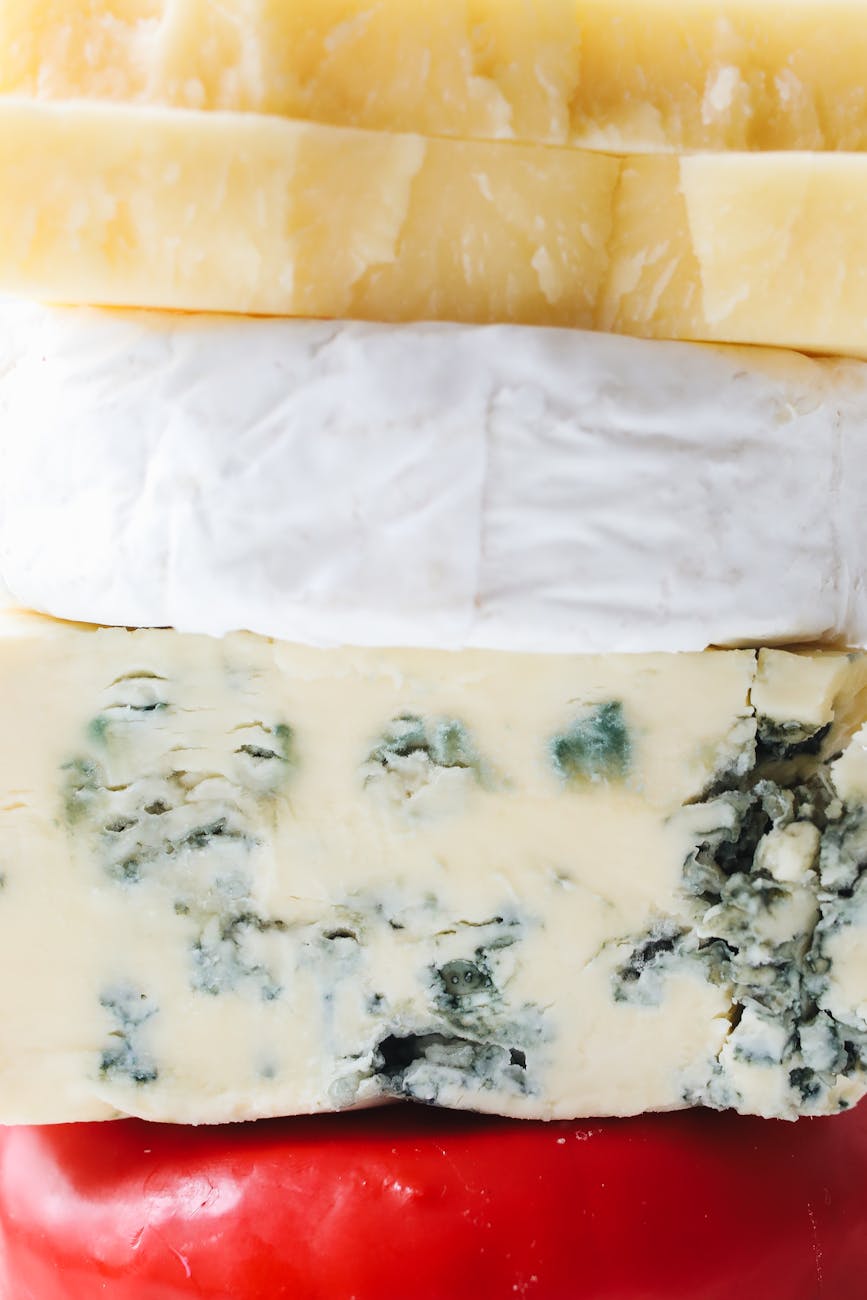
Other cheeses
As with all other dairy choices, cheeses that are organic and from grass fed cows are the best option due to the balanced ratios of omega 3:6. Cheeses also have considerably less lactose than other dairy products, and some that are lactose sensitive have found they can consume some cheeses and not have symptoms.
Goat cheese and feta
Although goat cheese (which includes feta) isn’t from cows, and therefore doesn’t contain the same proteins, it is a good choice to substitute in on recipes when cow’s dairy foods aren’t an option.
Feta doesn’t typically have the same strong flavor that other goat cheeses do, and it’s a staple in Mediterranean fare.

I will also add that per the Mediterranean Diet guidelines (which are like the basic blueprint to an Anti-Inflammatory Diet), dairy is allowed, but in moderation.
Bottom Line
Dairy isn’t automatically “good” or “bad.” It’s about your body + the quality you choose. Test it, track it, and make choices that calm inflammation instead of fueling it.
You’ve got this — and my Quick Start Guide will show you the exact next steps to take.
As always when it comes to questions about allergies, intolerances, or sensitivities to food, the best place to start is with your doctor.
And the combination of anti-inflammatory lifestyle choices and an elimination diet with the guidance of a nutritionist is the best way to get answers for your specific needs when it comes to building your personal Anti-Inflammatory Diet.
Discover My Unique 4-Pronged Approach to the Anti-Inflammatory Diet So You Can Get Started Immediately (Without Getting Overwhelmed or Cleaning Out Your Entire Pantry)
- Why a full-scale pantry clean out is NOT the best way to start your anti-inflammatory journey, and the steps you can take instead to make sure you’re fueling your body with foods that love you back
- The essential foods you MUST add into your diet if you want to nourish and heal your body naturally
- My anti-inflammatory shopping list so you can quickly fill your cart with the right foods (no googling in the produce aisle or wasting hours staring at ingredient lists)
GET YOUR FREE
ANTI-INFLAMMATORY


